When Windows force fully shut down when booting up Windows Operating System triggered by a routine called Delayed Procedure Call or DPC that tries to do an illegal operation. This BSOD or Blue Screen of Death is reported by multiple members and is quite common among users.
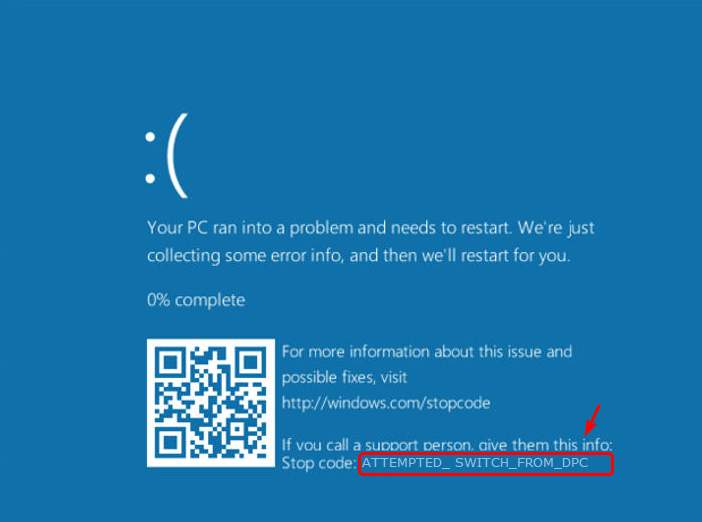
There are various different reasons why this BSOD usually happens, this includes:
- Faulty System Memory
- Conflicting Hardware
- Incompatible Software
- Outdated System Drivers or
- Malware Attacks
Even though BSOD is hard to deal with sometimes, and requires multiple attempts to fix the error. We have listed all the possible methods that you can try and resolve attempted_switch_from_dpc Blue Screen error in Windows.
Fix 1: Check for Viruses
Many times, BSOD happen when some illicit malware or virus tries to invade or infect your system. It can happen when you download something from third party websites. The best way to ensure that your system is not infected is to use Microsoft in-built protection software Windows Defender. To scan your whole computer using Windows Defender follow the steps given below:
Step 1: Click Start icon from the taskbar.
Step 2: Go to search bar and type Security and press Enter.
Step 3: From the given list choose the first option.
Step 4: Navigate to Virus and threat protection.
Step 5: Click on Scan options.
Step 6: Select Full Scan and then Scan Now.
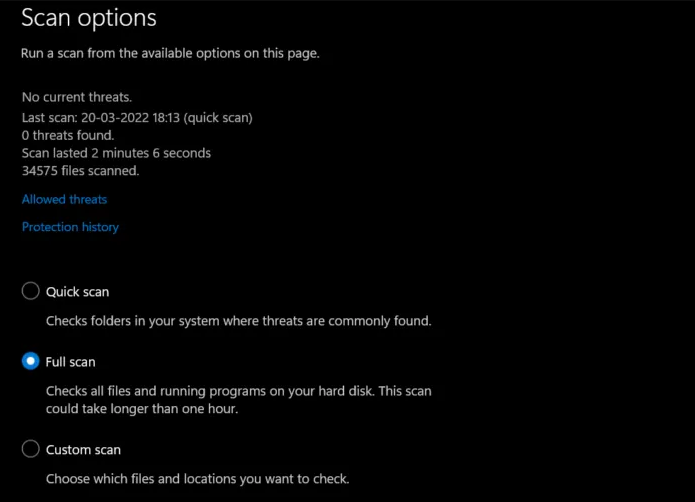
Wait till the scan is complete, this will scan your whole computer and remove malicious files.
Fix 2: Perform Memory Check
Other possible cause of this BSOD is corrupted or damaged memory software. Perform a memory check to make if this is the cause or not. To do so, follow the steps along:
Step 1: Open Start menu.
Step 2: Go to search bar and type memory diagnostic.
Step 3: Open Windows Memory Diagnostic and select Restart now and check for problems (recommended).
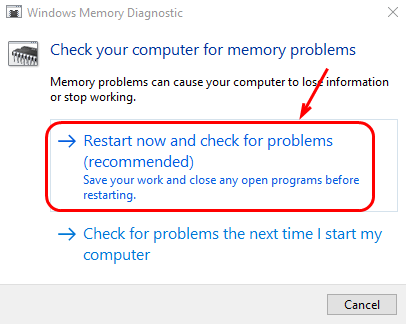
Step 4: Your computer will reboot into Windows Memory Diagnostic Tool and will start its process.
Step 5: After the process is complete it will restart to Windows Desktop and the test result will show up automatically. If it does not appear then you can check it manually.
Step 6: Press Win + R key at the same time to open Run dialogue box.
Step 7: Type entervwr.msc and press Enter.
Step 8: In Event Viewer Window, go to Windows Log > System and click Find.
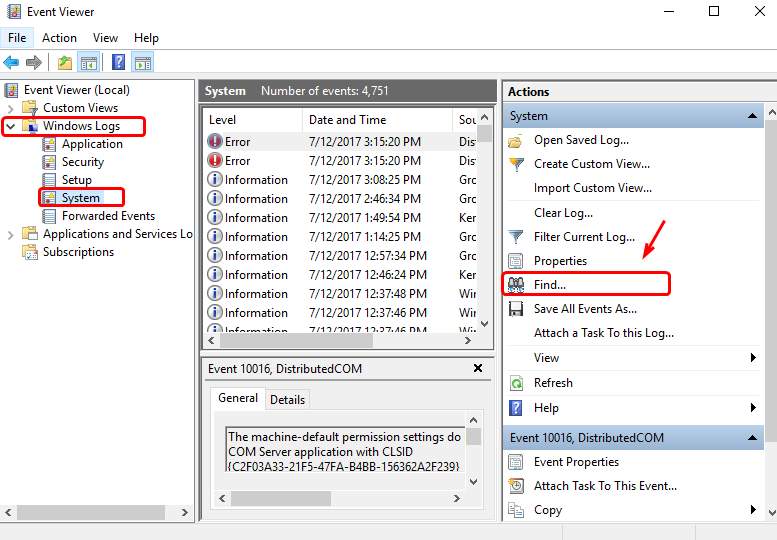
Step 9: Type MemoryDiagnostic in search bar and press Enter.
You will now be able to see the result at the bottom of the Window. If result show any fault then you have get change your old RAM.
Fix 3: Run SFC and CHKDSK Scan
Most BSOD happen due to corrupted registries or bad sectors on your hard drive. You can use command lines to both find and fix these issues within your computer. Follow these steps to do so,
Step 1: Press Windows + X on your keyboard simultaneously and choose Command Prompt (Admin).
Step 2: Click Yes at UAC or User Account Control prompt.
Step 3: Type the command followed by Enter.
sfc /scannow
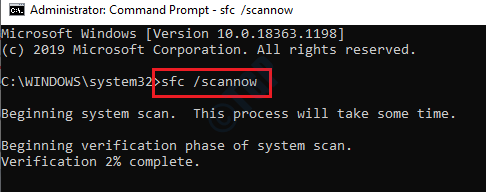
Step 4: After the process is complete, restart your computer.
Step 5: Again, open Command Prompt with administrator rights.
Step 6: Now type the following and press Enter.
chkdsk C: /f /r /x
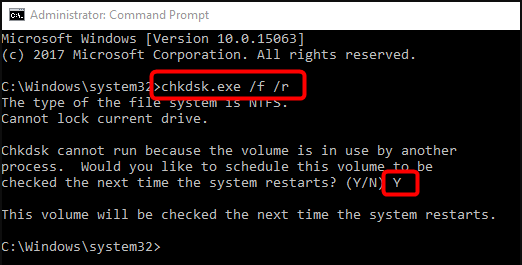
Step 7: When prompted with would you like to schedule this volume to be checked the next time the system restarts? (Y/N), Press Y and hit Enter.
Step 8: On your next boot, disk check will execute.
Wait for the process to finish and check if BSOD is fixed or not.
Fix 4: Do a System Restore
Restoring system to a previous working state is another way to solve BSOD. You can use this method only when you have created a restore point before the BSOD. If you have, then follow these steps to do a system restore:
Step 1: Open Control Panel and in search bar at the top right corner, type Recovery.
Step 2: In Recovery menu, select Open system restore.
Step 3: Click next and enable show more restore point.
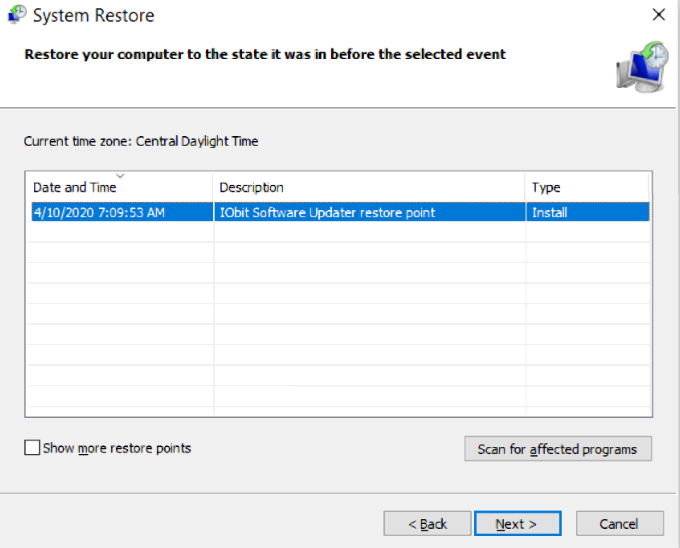
Step 4: Select a restore point before the BSOD and click next.
Step 5: Click Finish to start the restoration operation.
Once the operation finishes, reboot your computer and check if the issue was resolved or not.
Fix 5: Update System Drivers
One of the most common reasons for Blue Screen of Death is either outdated or faulty system drivers. Check if your system has the latest driver available or not. If not then you can use either the Device Manager to look for driver updates or you can manually go to your computer parts manufacturer’s website and download it from there.
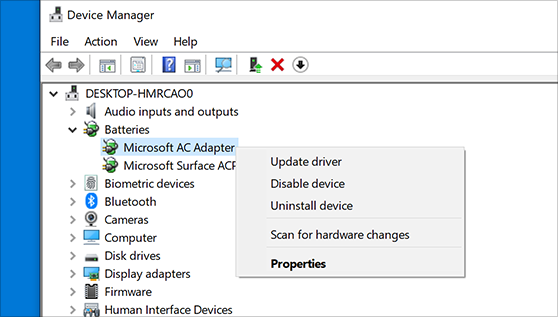
Manually updating your system drivers can be time consuming as well as complicated while trying to find device compatibility with the drivers and the software.
If you don’t have the computer skills or patience to update your drivers manually then you can use our Driver Solution Tool to do it automatically. Our tool will recognize your system and download the correspondent compatible driver from genuine sources and install them automatically.
⇓Download Driver Easy Now⇓
These are all the various possible ways to fix your attempted_switch_from_dpc blue screen error on Windows operating system with instructions and steps you can follow and solve your BSOD error.


